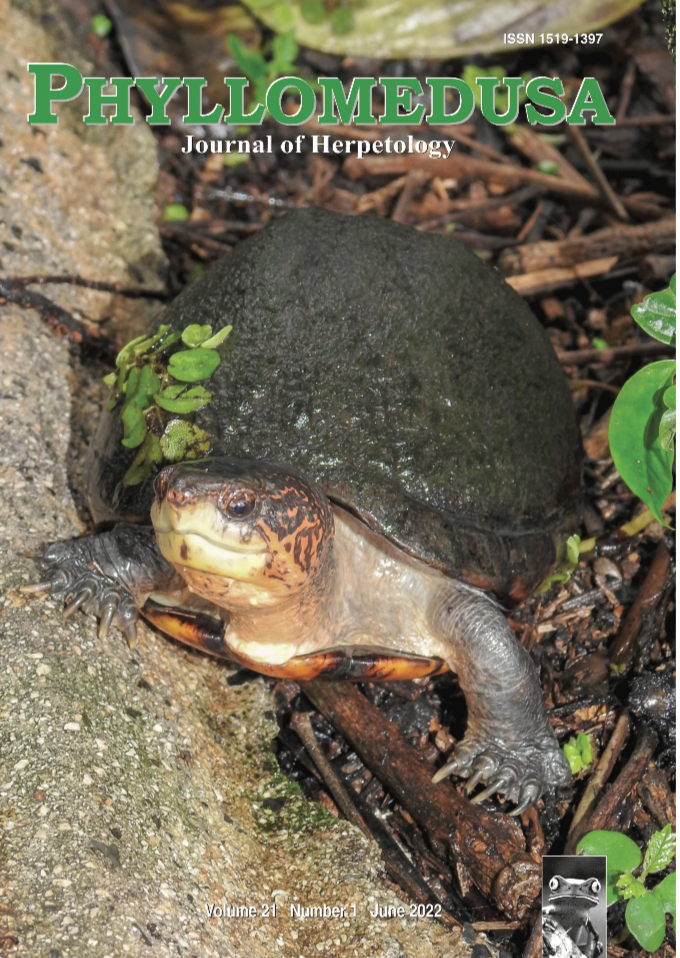Terrestrial movements, activity patterns and habitat use by Kinosternon scorpioides (Testudines: Kinosternidae) in Palo Verde National Park, Costa Rica
DOI:
https://doi.org/10.11606/issn.2316-9079.v21i1p3-15Keywords:
Dry forest, Estivating sites, Freshwater turtles, Global climate change, Scorpion Mud TurtleAbstract
The Scorpion Mud turtle, Kinosternon scorpioides, is a widely distributed, semiaquatic species known to engage in regular terrestrial movement and terrestrial estivation. We studied terrestrial behavior in this species in Palo Verde National Park, northwestern Costa Rica. We determined terrestrial activity patterns by searching for active individuals during transects along 3.4 km of trails. We determined the distance that turtles traveled between the wetlands and estivation sites by fitting 10 terrestrially active individuals with a thread-bobbin tracking device attached to the rear of the carapace. We identified sex and marked and measured every turtle found active. We accumulated 92 observations of K. scorpioides active on land and we identified two behaviors: traveling and nesting. These turtles showed a bimodal activity pattern (χ2 = 18.1, p < 0.02, df = 8) with maximum activity during early morning hours (06:00 to 08:00 h) and twilight and early evening hours (16:00 to 20:00 h). We found 41 turtles estivating in deciduous dry forest at an average distance (±SE) of 156.4 ± 13.7 m (range 20.9–304.9 m) from the wetland border (water´s edge). Adults estivated at greater distances from the wetland than did juvenile turtles, and males estivated at greater distances than females. Turtles found estivating were in three different habitats: leaf litter (85%), rock cavities (10%), and tree buttresses (5%). Kinosternon scorpioides was observed to estivate for at least 84 days in PVNP during the dry season. We recorded several behavioral traits that may account for its ability to withstand desiccation during the estivation period. Our work underscores the need to include terrestrial habitats when considering the conservation needs of semiaquatic turtles.Downloads
Download data is not yet available.
Downloads
Published
2022-06-24
Issue
Section
Articles
License
Copyright (c) 2022 ESALQ-USP

This work is licensed under a Creative Commons Attribution-NonCommercial-NoDerivatives 4.0 International License.
All material originally published in Phyllomedusa belongs to Escola Superior de Agricultura Luiz de Queiroz - Universidade de São Paulo. All contents are under a license of Creative Commons BY-NC-ND.How to Cite
Mora, J. M., & Castañeda, F. E. (2022). Terrestrial movements, activity patterns and habitat use by Kinosternon scorpioides (Testudines: Kinosternidae) in Palo Verde National Park, Costa Rica. Phyllomedusa: Journal of Herpetology, 21(1), 3-15. https://doi.org/10.11606/issn.2316-9079.v21i1p3-15



 Impact Factor (JCR): 0.600
Impact Factor (JCR): 0.600 CiteScore: 1.0
CiteScore: 1.0